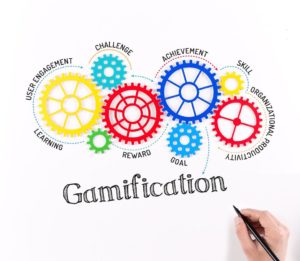 Keeping learners engaged isn’t always easy in the cannabis industry and there are many contributing factors, ranging from the fact that they do not feel challenged or the fear of compliance failure.
Keeping learners engaged isn’t always easy in the cannabis industry and there are many contributing factors, ranging from the fact that they do not feel challenged or the fear of compliance failure.
It often comes down to personal factors, including the instructor and learner relationship or a particular teaching style. Now that so many organizations are implementing remote training in the midst of the COVID-19 Pandemic (see our free training here), keeping learners engaged with online learning is more important than ever.
While convenient for some, engaging learners online can be more challenging than in a face-to-face setting. Trainers can no longer approach learners and personally guide them on areas they may struggle with, nor can they easily give fast-finishers extra activities.
This means learners might give up on their work more easily because they feel too much pressure or, conversely, they are bored. Creating and cultivating an engaging learning environment helps with learner retention and contributes to a safe, positive, and creative organizational climate and culture.
Today we look at several ways to initiate engagement in your online course, and how to keep the momentum going for learners in the cannabis industry.
Initiating Engagement
 Creating an engaging learning environment can be difficult to do in the cannabis industry, but it need not be. In a traditional classroom setting, trainers often start with icebreakers.
Creating an engaging learning environment can be difficult to do in the cannabis industry, but it need not be. In a traditional classroom setting, trainers often start with icebreakers.
This could come in different forms such as having learners play a simple game or do a short quiz. Let’s look at a couple of ways to break the ice in your online training:
- Use a Forum activity (which we use in our Massachusetts Responsible Cannabis Vendor Certification) and start an “introduce yourself” thread for your learners to get to know each other. Before you begin, set a good set of rules of engagement or etiquette in place so that everyone knows how to properly respond.
Want to make it more fun? Ask your learners to write statements about themselves that can be true or false, and have their peers guess! - Set up a glossary (like we have our Cannabis Industry Glossary Terms) and ask your learners to add an entry about themselves. This will also help learners familiarise themselves with our platform, as the Glossary allows them to add their own photos, videos, or audio files.
Looking for more ideas to break the ice with online cannabis learners? See our favorite icebreaker activities.
Setting Individual & Shared Goals
![]() Advising your learners on what they can expect from your class and what the structure of the course is from day one (1) will empower them to focus on learning. At the same time, it’s also important that they identify and commit to their own personal targets.
Advising your learners on what they can expect from your class and what the structure of the course is from day one (1) will empower them to focus on learning. At the same time, it’s also important that they identify and commit to their own personal targets.
If you have your learners state in black and white their intentions at the start of the course, what their plan is, and what grade they want when they intend to complete everything, it engages them early on and can help keep them moving forwards.
Keep Learners Motivated Using Feedback
 Now that we’ve explored how to get our learners engaged, how can we maintain that momentum? Whichever activities you get learners to do, without feedback they won’t be inclined to continue.
Now that we’ve explored how to get our learners engaged, how can we maintain that momentum? Whichever activities you get learners to do, without feedback they won’t be inclined to continue.
Quoting education guru John Hattie: “Feedback is one of the most powerful influences on learning and achievement… but its impact can be either positive or negative.” If you want your feedback to have a positive impact, two (2) things to consider when providing feedback to learners are your tone and timing.
1. Feedback Tone
When it comes to the tone, it’s important to have in mind that young people and adults are influenced to change who they are based on what people tell them in a negative connotation. “You tell someone that they’re stupid or they’re no good at it and then they become what you say. Your words and how you phrase them in your feedback are very important. You need to be giving your feedback regularly to your learners and try to connect with them.”
2. Timing Is Key
The sandwich method of feedback – packaging learners’ points for improvement between points you felt they were good at – is a good way to cover all parts of your learner’s work and make sure the feedback ends on an encouraging note. Timing is also an essential element when providing feedback.
Ideally, you should be able to give feedback in time for your learners to apply your comments and tips to their next assignment. The many options available for Quiz question feedback are ideally suited to this. This enables them to learn from what they did and reflect on what they can do differently next time.
In a way, it’s more about giving “feed-forward” rather than feedback.
Encouraging Them To Learn From Each Other
 And, of course, you can also do peer reviews, where learners review their classmates’ work and learn from each other.
And, of course, you can also do peer reviews, where learners review their classmates’ work and learn from each other.
Some examples of peer-reviewing you can do in cannabis LMS are the workshop activity or implementing a “rating” system in your forums where learners can rate a forum post as useful or not.
Involving learners in peer assessment will allow them to learn from others and interact with each other and develop a sense of responsibility.
You can foster this even more by, for example, assigning a learner as a forum moderator, allowing them to remove inappropriate posts, split posts that go off-topic, and keep conversations going.
Engaging With Gamification
 Gamification, or “the use of game elements and game design techniques in a non-game context” is yet another way to keep learners motivated. Do this by implementing points, badges, and other competitive elements in your courses, similar to those your learners experience in online gaming.
Gamification, or “the use of game elements and game design techniques in a non-game context” is yet another way to keep learners motivated. Do this by implementing points, badges, and other competitive elements in your courses, similar to those your learners experience in online gaming.
Gamifying course activities can also give learners a sense of progress. Along with standard features such as Activity completion and Restrict access, our platform has several gamification plugins that we use, for example, one called Level Up!, which allows learners to see their progress in points.
These points accumulate as they go through the course and you can even put up a leaderboard to let learners see their rank with their peers! While Gamification might be fun, it also should be balanced with the rest of your teaching strategy:
- But, if you put too much gamification in your courses, learners might forget that they are there to actually learn. They will be more interested in rushing through activities to get the badges for instance. And learners who are already intrinsically motivated will feel patronized by gamification.
Final Take-Away
 At the end of the day, engaging with your learners should build relationships and create a safe environment for them. If you’re going to maintain engagement, you need to build relationships, create a sense of community, and support your learners.
At the end of the day, engaging with your learners should build relationships and create a safe environment for them. If you’re going to maintain engagement, you need to build relationships, create a sense of community, and support your learners.
If you can make your learners feel important because they have a sense of responsibility, interactivity, and creativity, they’re going to actually want to work with the right level of challenge in a Cannabis Industry Learning Management System (LMS).
Let us know what you think.




Responses